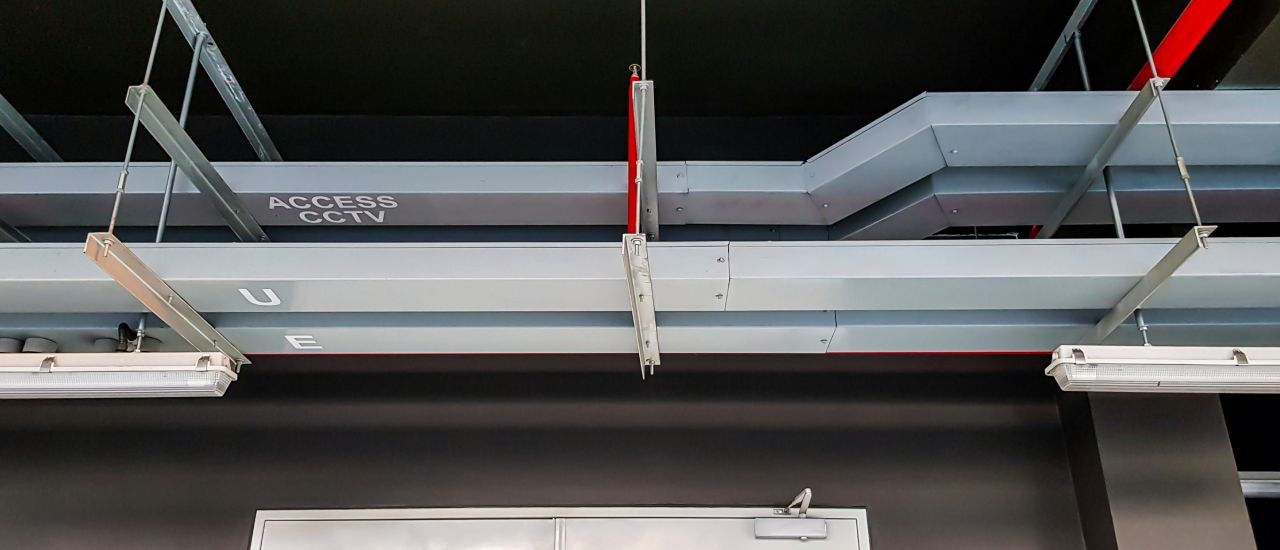Designing Ventilated Cable Trunking for Heat Control in UAE Data Centres

In the hot climate of the UAE, the issue of heat management in data centers is becoming a key factor in their reliability and energy efficiency. High temperatures, humidity, and dust create extreme stresses on cable systems, where even small design errors can lead to overheating, equipment failure, and increased cooling costs. A well-designed ventilated cable trunking system allows not only efficient management of heat flows, but also prolongs the service life of equipment, reducing the risk of failures and downtime.
Rational management of heat and air flow
The main task of cable trunking suppliers is to ensure an even distribution of air and to prevent the formation of hot zones. In narrow routes and intersections of cable ducts, the air flow is often disrupted, which reduces cooling efficiency. According to engineering calculations, when the cable duct is filled by more than 50%, the effect of an "air plug" occurs, blocking convection. The optimal level is considered to be up to 40-45%, which ensures a stable movement of cooled air. When calculating pressure losses, the formula Dp = nn × (l/dh) × (pv2/2) is used, which takes into account the length of the route, the hydraulic diameter and the flow density.
To improve circulation, a wire mesh cable tray is used, which provides free passage of air and reduces flow resistance. Their open design helps maintain the temperature difference between cold and hot corridors and prevents energy overruns for cooling. At the same time, the combination of overhead trunking and underfloor trunking systems helps to balance flows and minimize turbulence under the raised floor.
Materials and thermal stability of structures
The choice of material plays a crucial role in the UAE, where the air temperature exceeds 45 °C. Metal trays without expansion compensation are subject to deformation. Expansion couplings are used to solve this problem, providing flexible connections when heated. The most demanded materials are galvanized steel and FRP (Fiberglass Reinforced Plastic). Hot-dip galvanizing (HDG) enhances corrosion resistance, and 316L stainless steel is used for systems operating in coastal or chemically active environments.
According to regional regulations, the systems must have a degree of protection not lower than IP54 for indoor and IP65 for outdoor installations. This guarantees protection from dust and moisture, as well as stable operation even at high humidity. The use of GI trunking and slotted channel structures increases the stability and accuracy of the assembly of the entire system, as well as prevents electromagnetic interference (EMI) when laying power and signal cables together.
Design standards and energy efficiency
When designing data centers in Dubai and Abu Dhabi, special attention is paid to the DEWA and ADDC standards governing grounding circuits, cable segregation, and fire protection. The key indicator of cooling efficiency is Power Usage Efficiency (PUE), which reflects the ratio of energy consumption to the capacity of IT equipment. Modern solutions for hot and cold flow isolation (hot aisle and cold aisle containment) can reduce annual cooling costs by 43% and reduce PUE by 15%. Such results are achieved by preventing the mixing of hot and cold air and increasing the temperature of the cooling water supply in the system.
The metrics EER (Energy Efficiency Ratio), SEPR HT (Seasonal Energy Performance Ratio – High Temperature) and SHR (Sensible Heat Ratio) are additionally used to assess energy efficiency. Their use helps engineers optimize cooling systems, taking into account seasonal and operational factors.
Cable systems and maintenance management
Effective operation is based not only on engineering design, but also on competent maintenance. Dust, humidity, and vibrations can impair heat transfer and accelerate corrosion. Regular cleaning and documentation of all changes in the cabling scheme helps to maintain the stability of the system. At the same time, special attention is paid to the use of Low Smoke Zero Halogen (LSZH) cables, which, when ignited, do not emit toxic gases and are suitable for large rooms. For power lines, Medium Voltage (MV) cables with a voltage range of 11-33 kV are used, conforming to BS6622 and BS7835 standards.
Segregation of power and low-current circuits is mandatory to prevent electromagnetic interference. At the points where the cables intersect, the angle should be 90°, and the metal partitions should be grounded along their entire length. In high—density server environments, a combination of copper and optical lines is often used - this approach ensures a balance between data transfer speed and power stability.
Large data storage centers also use liquid cooling systems that can reduce the energy consumption of cooling systems by more than 90% and return up to 60% of the heat to the grid. However, even with the introduction of such technologies, cable channels remain an integral part of thermal management — it is through them that heat flows are distributed, affecting the operation of the entire infrastructure.
Modern design of ventilated cable ducts in UAE data centers requires a comprehensive approach, from aerodynamic calculations and material selection to thermal load analysis and regulatory compliance. The use of wire mesh and GI trunking, compliance with 45% of the filling rule, the introduction of containment systems and liquid cooling technologies ensures stable operation of servers even in extreme climatic conditions. Such engineering precision becomes not just an element of infrastructure, but an active temperature control tool and a guarantee of the durability of the entire data center.
